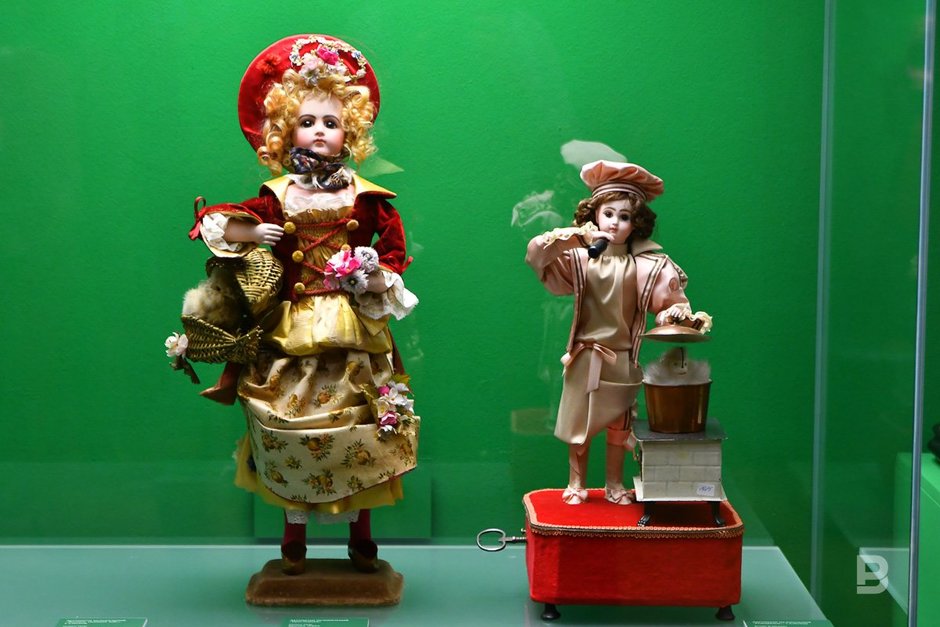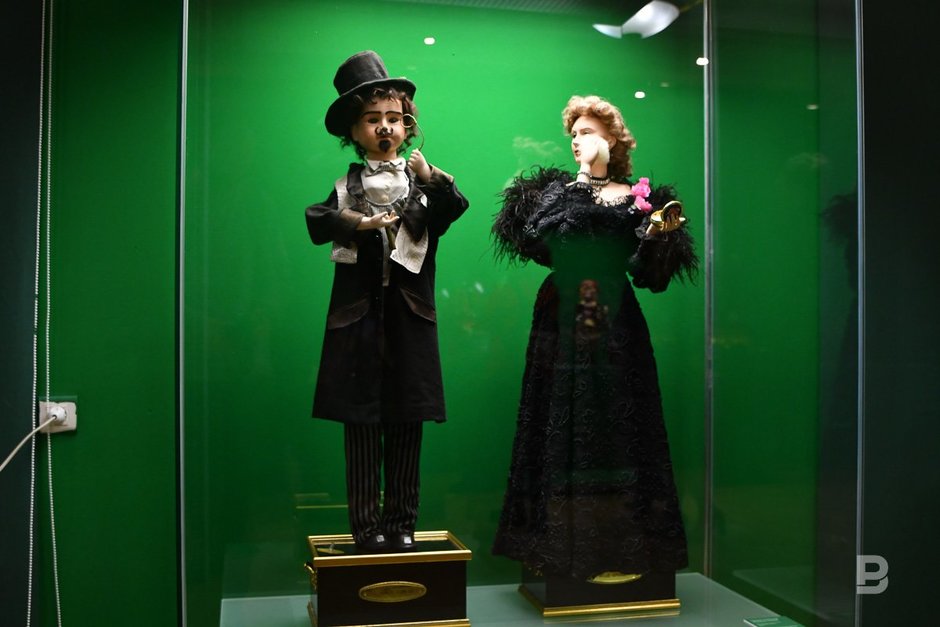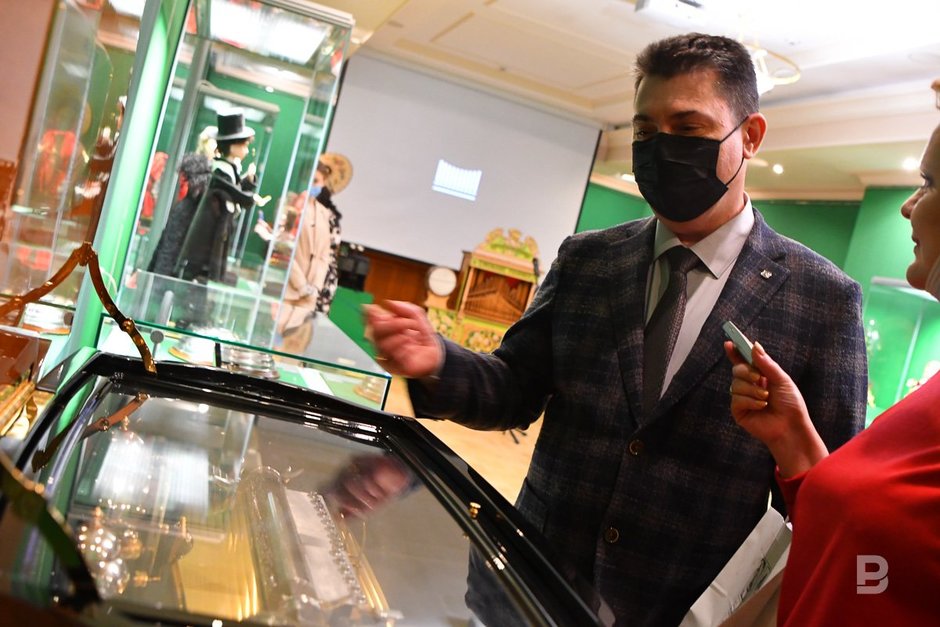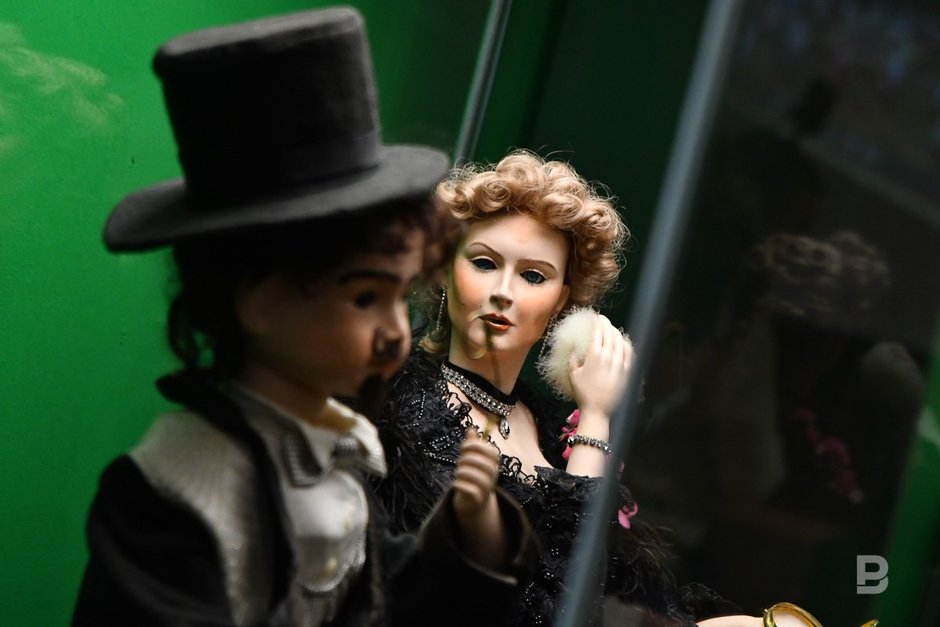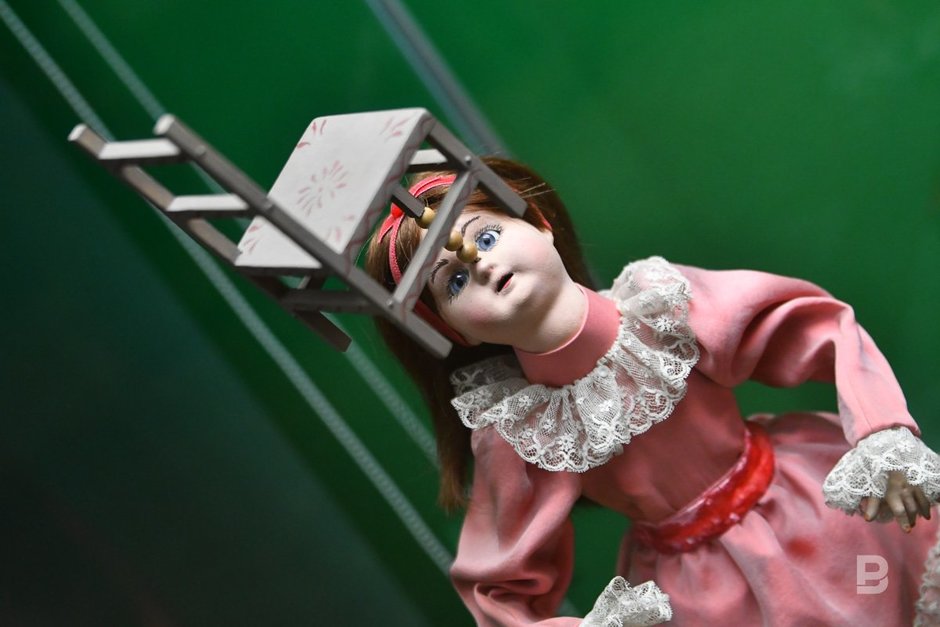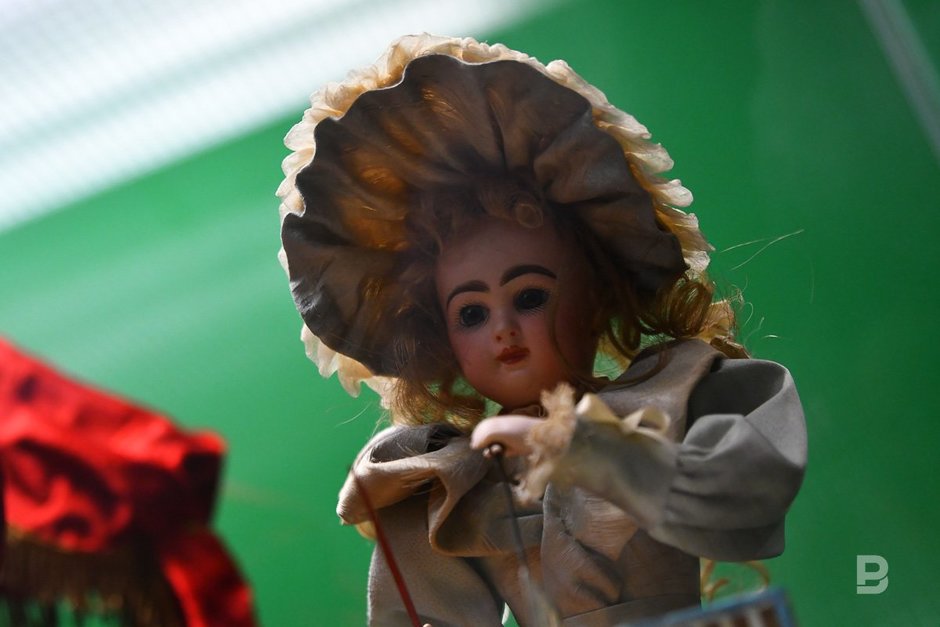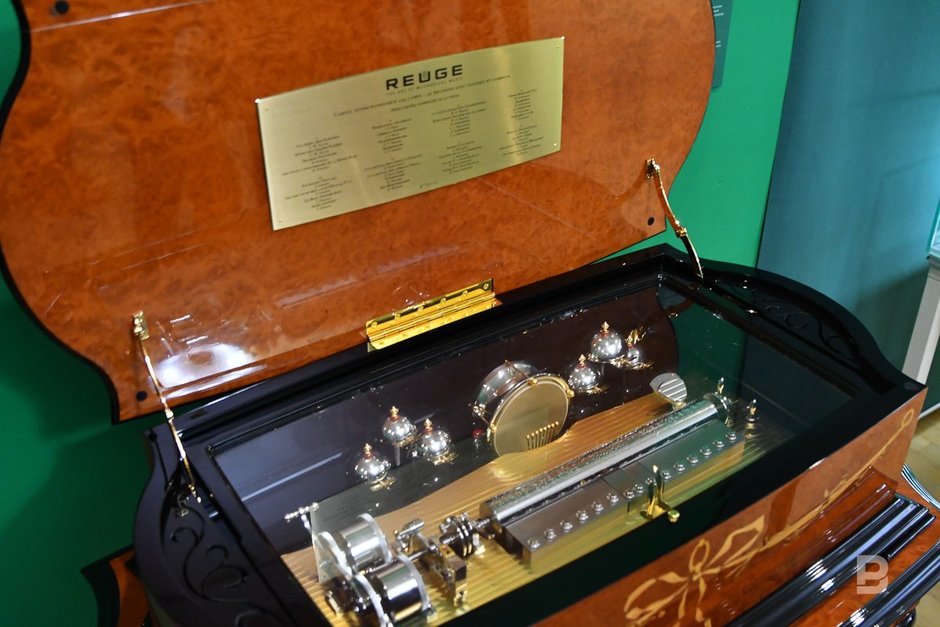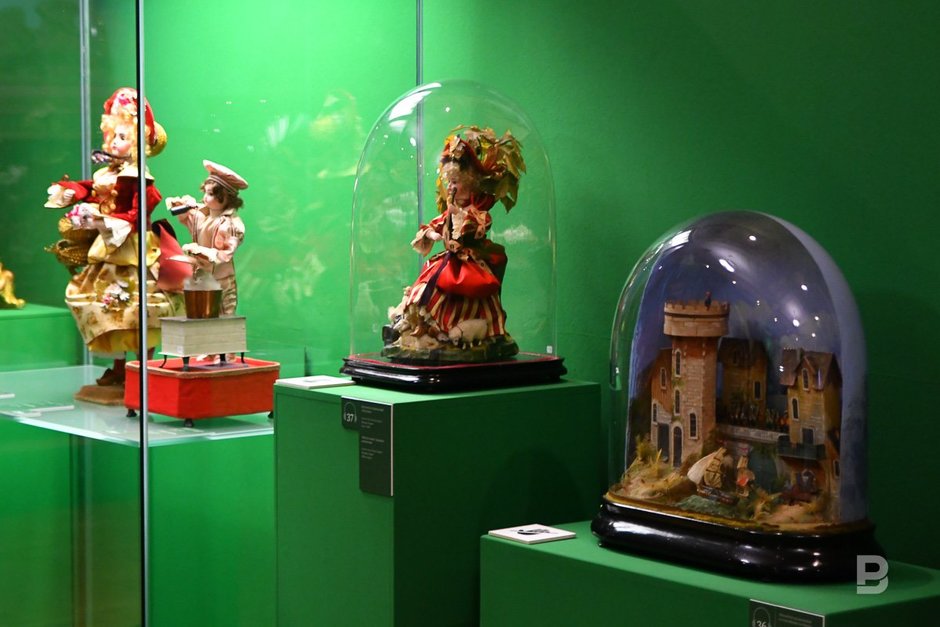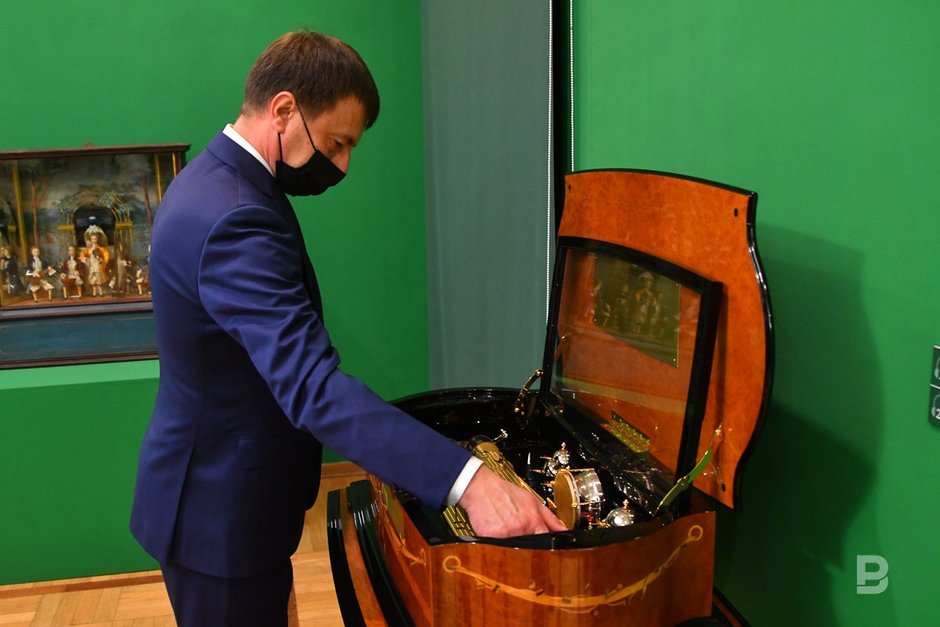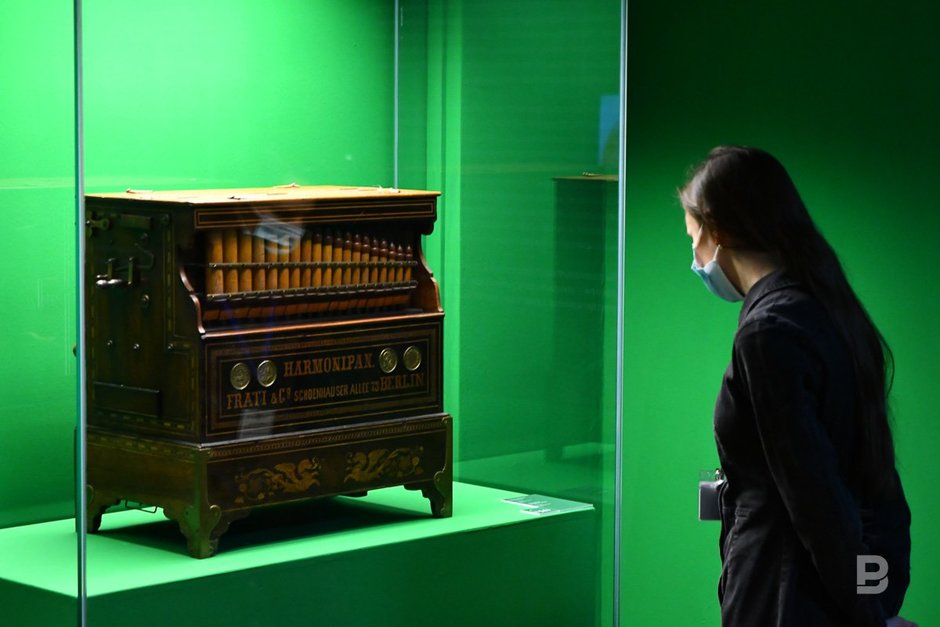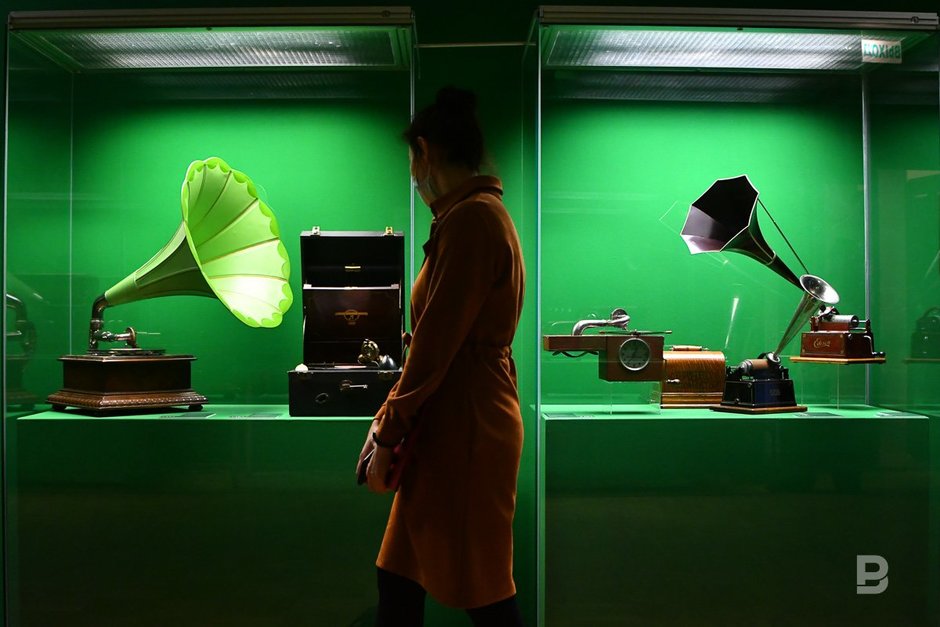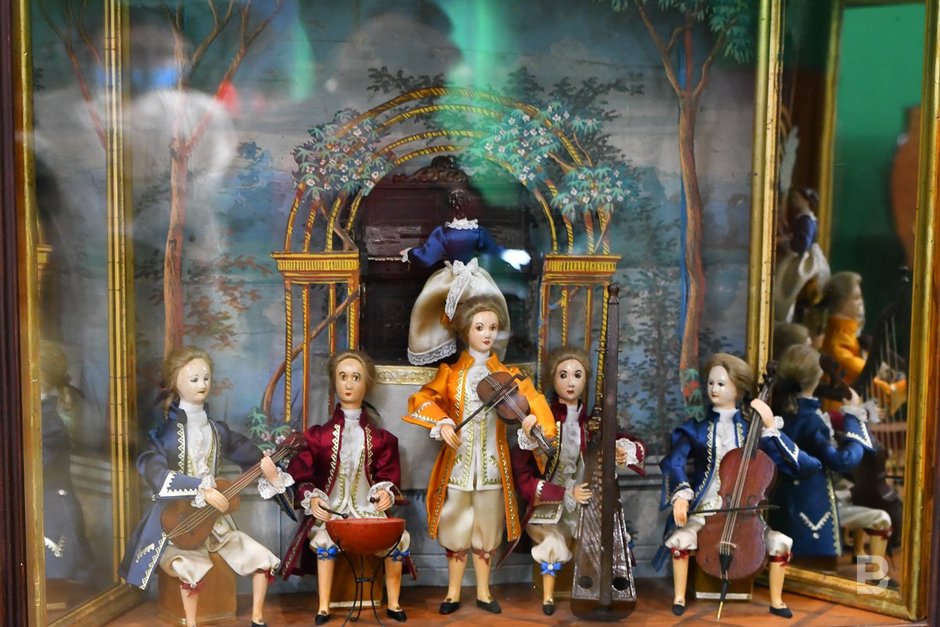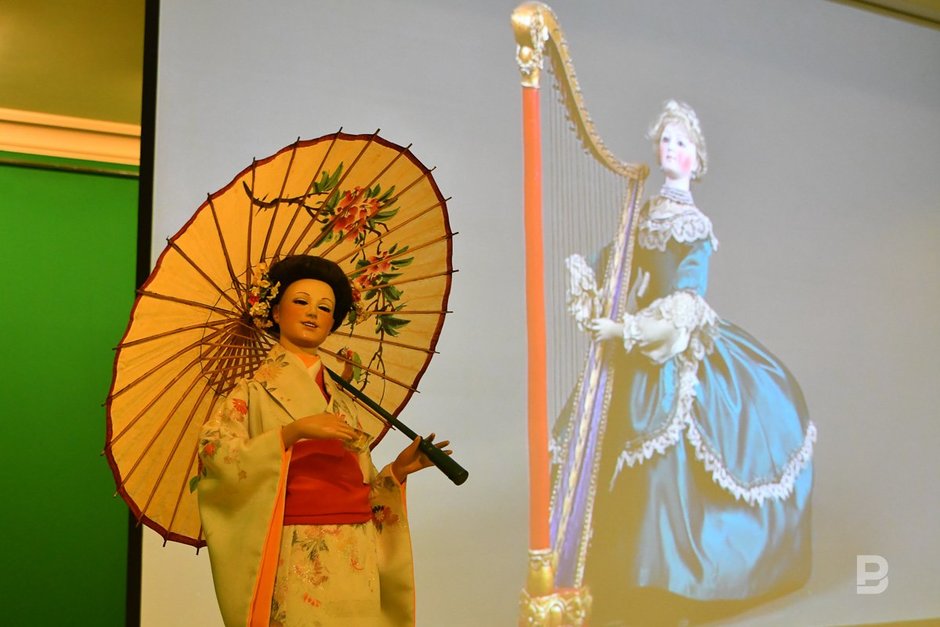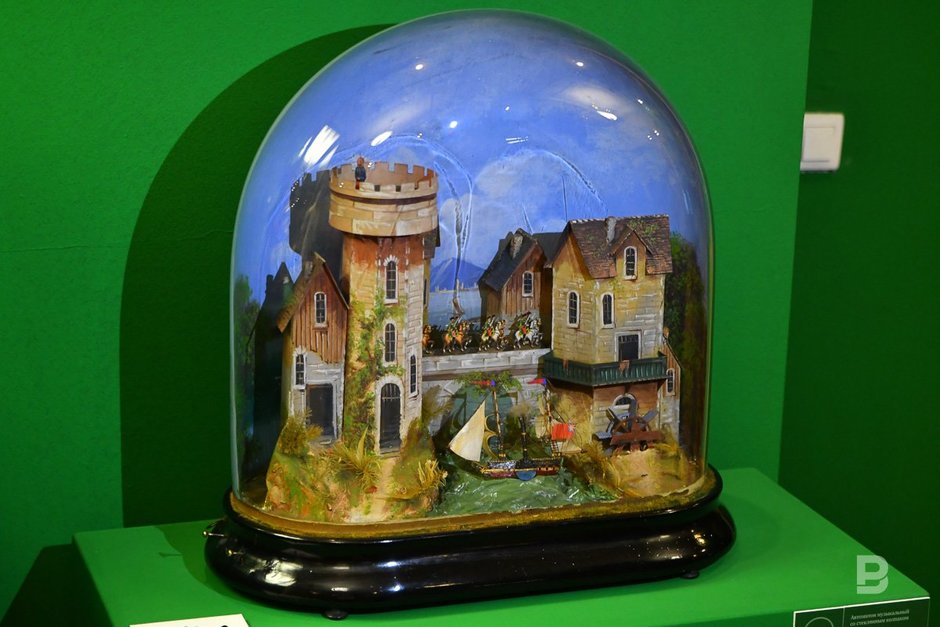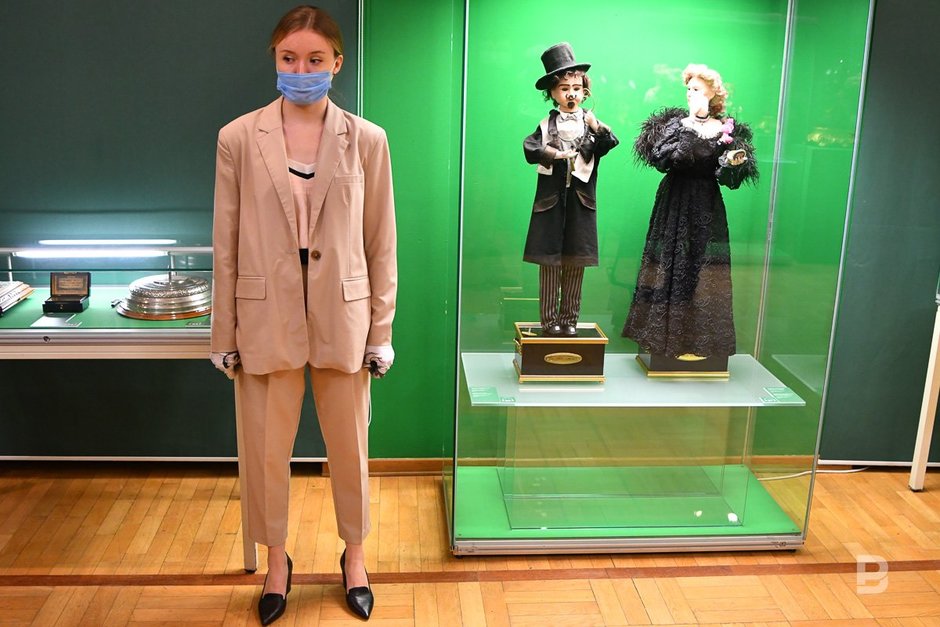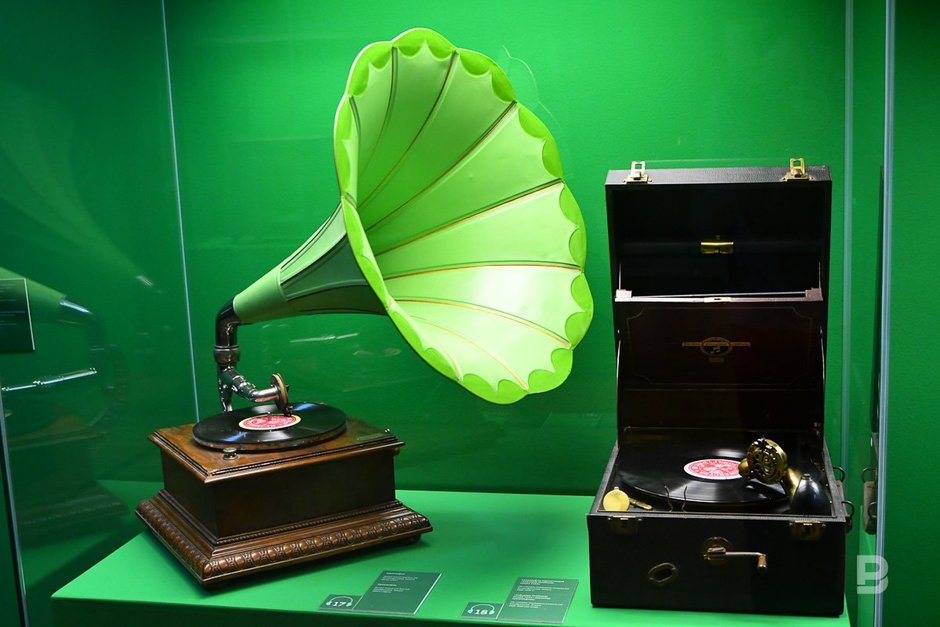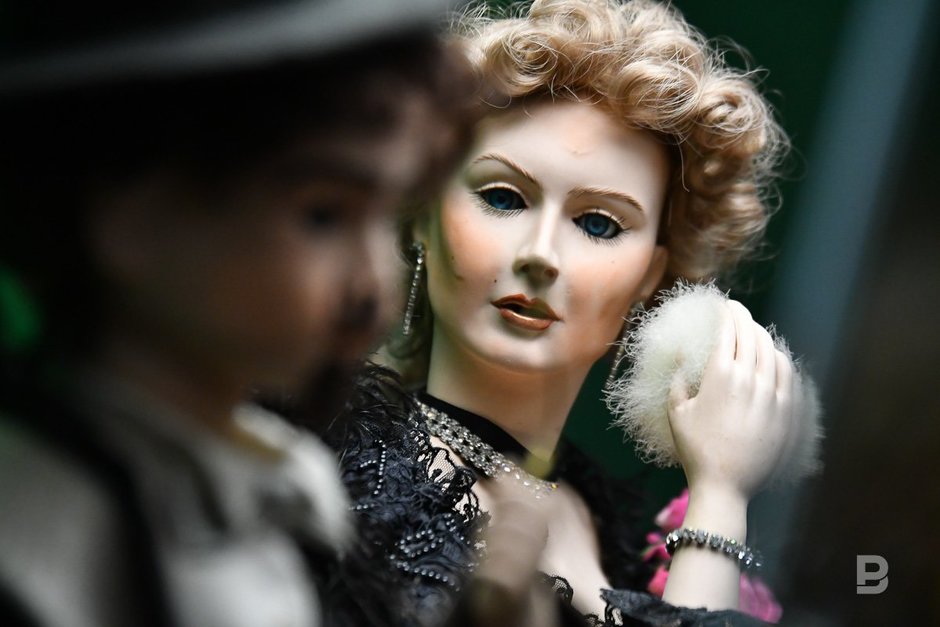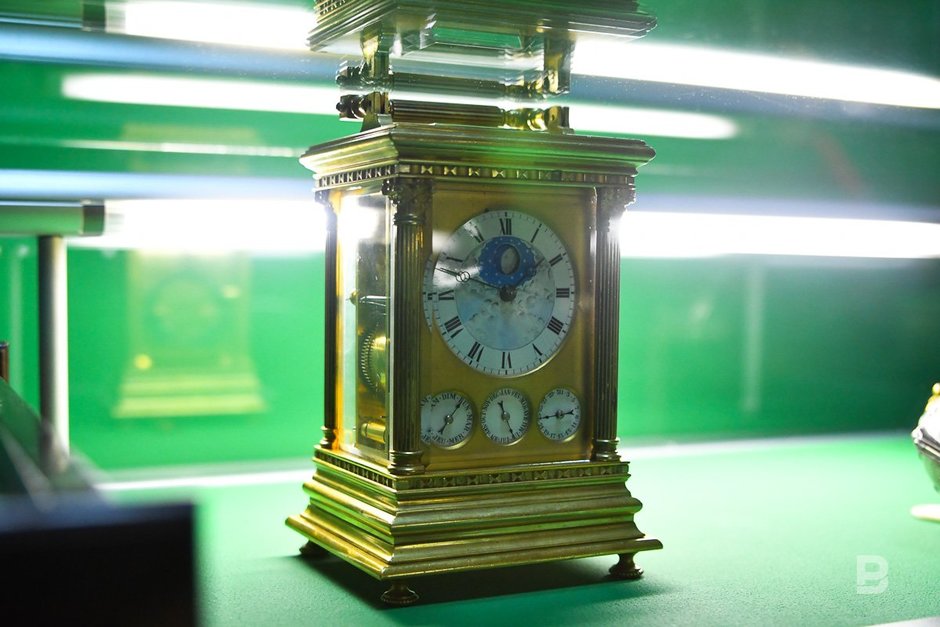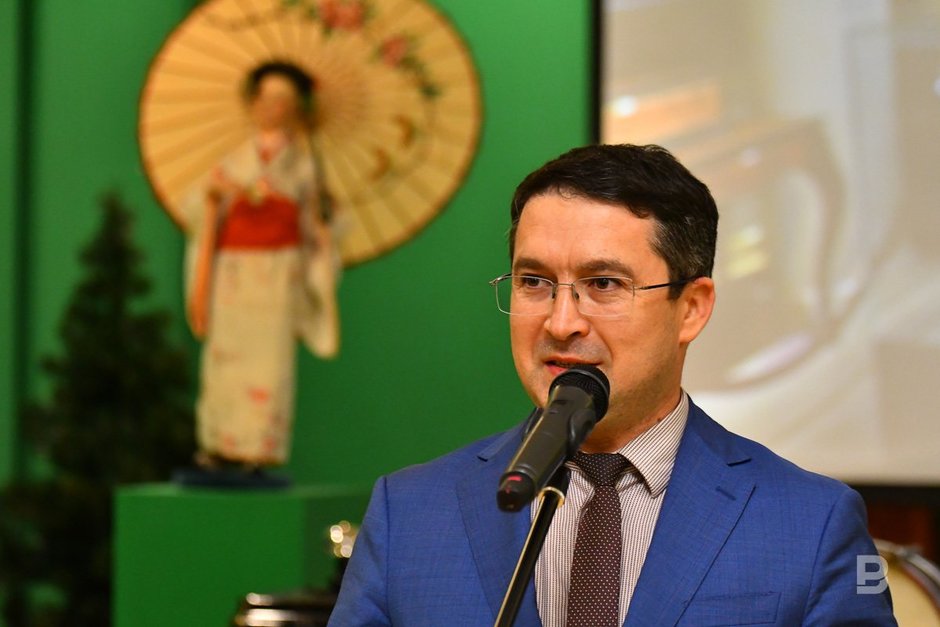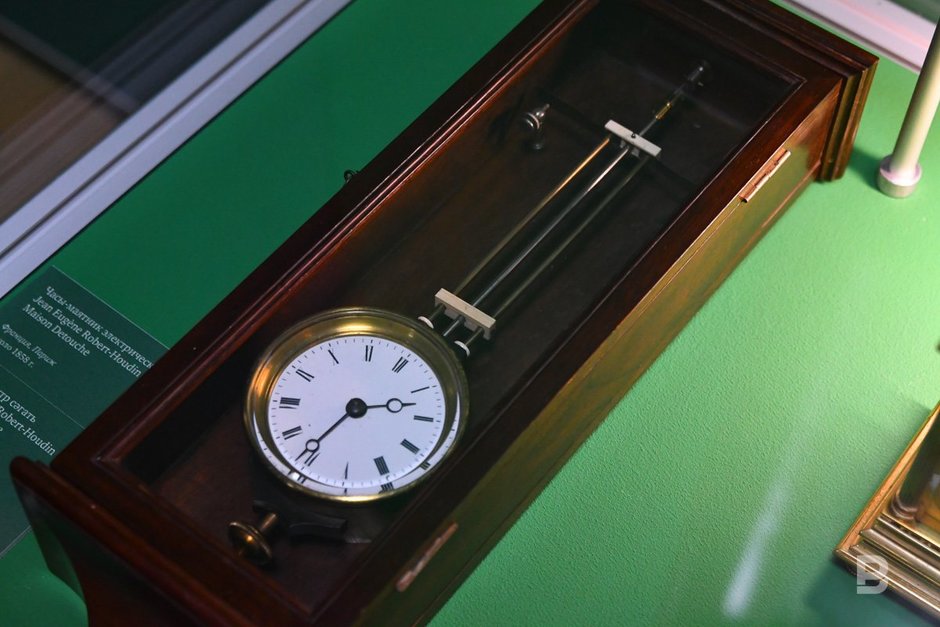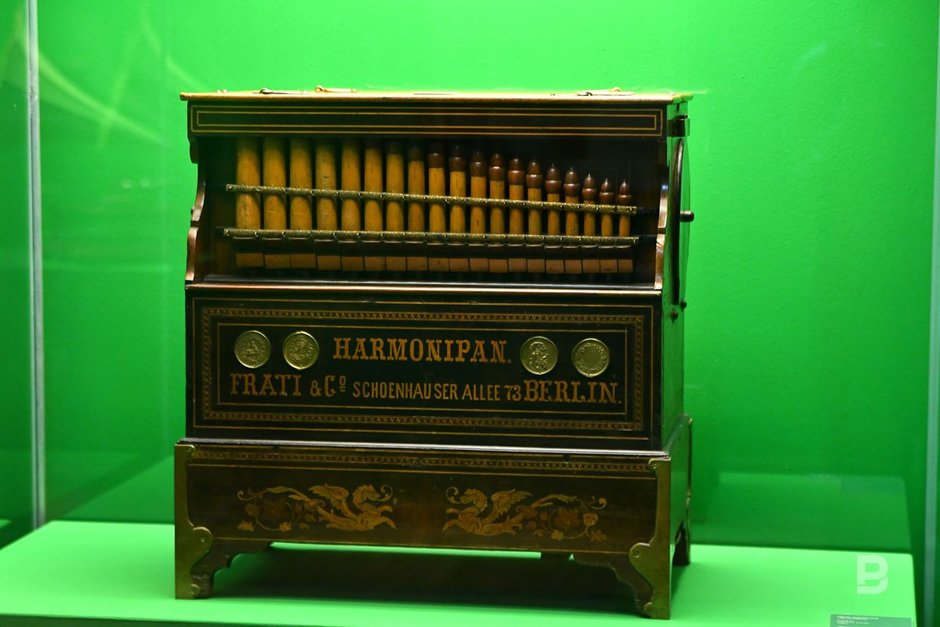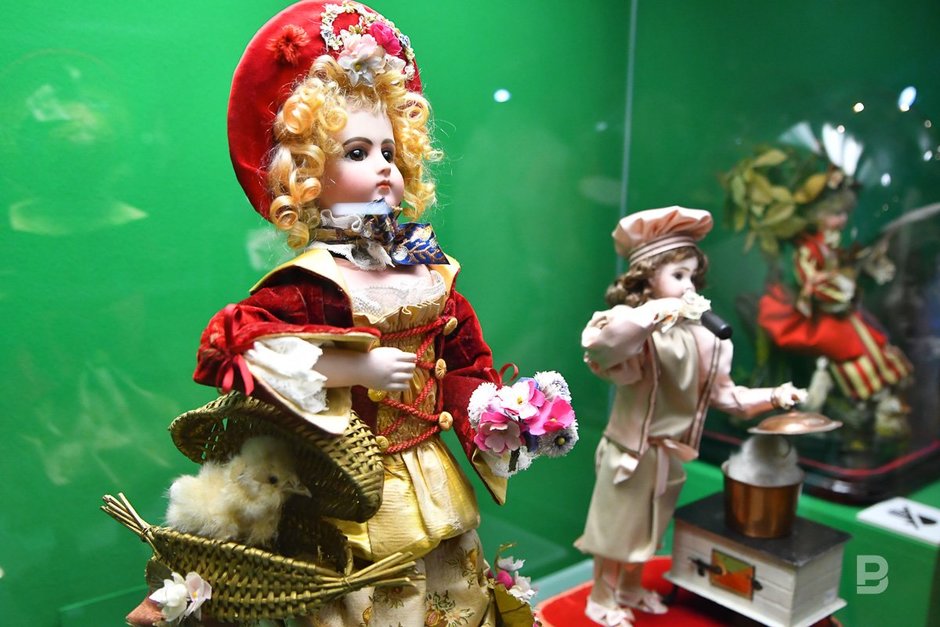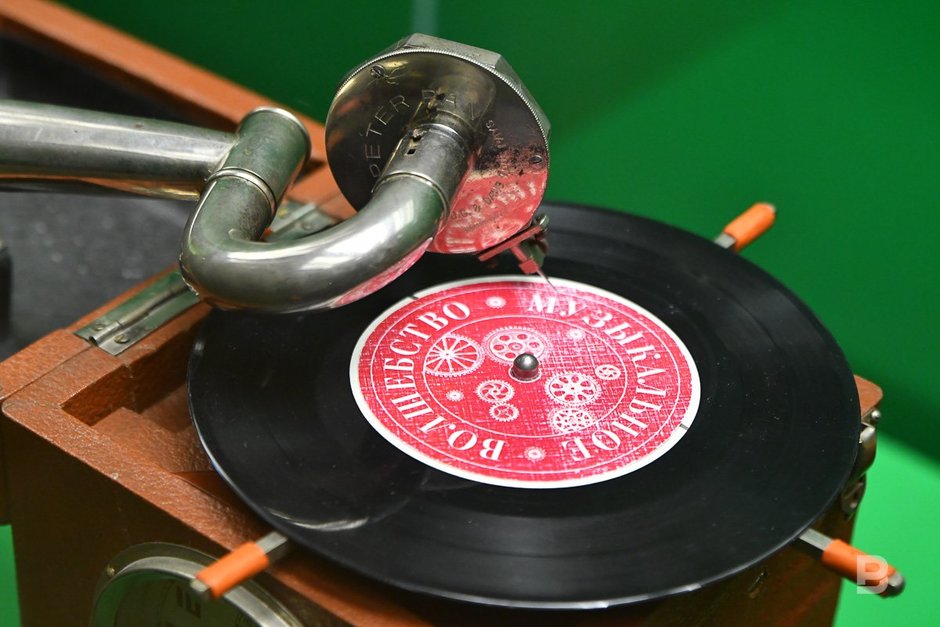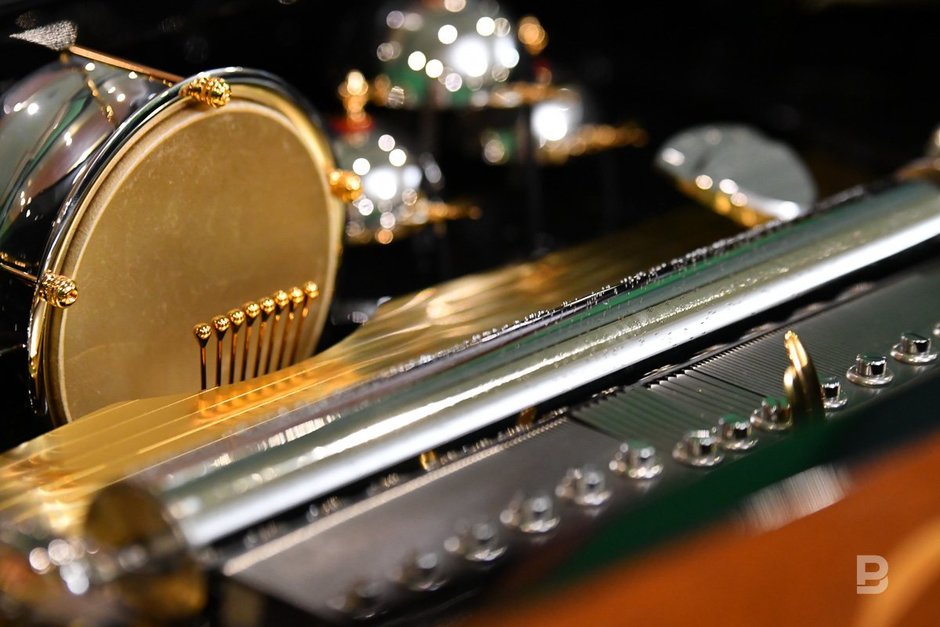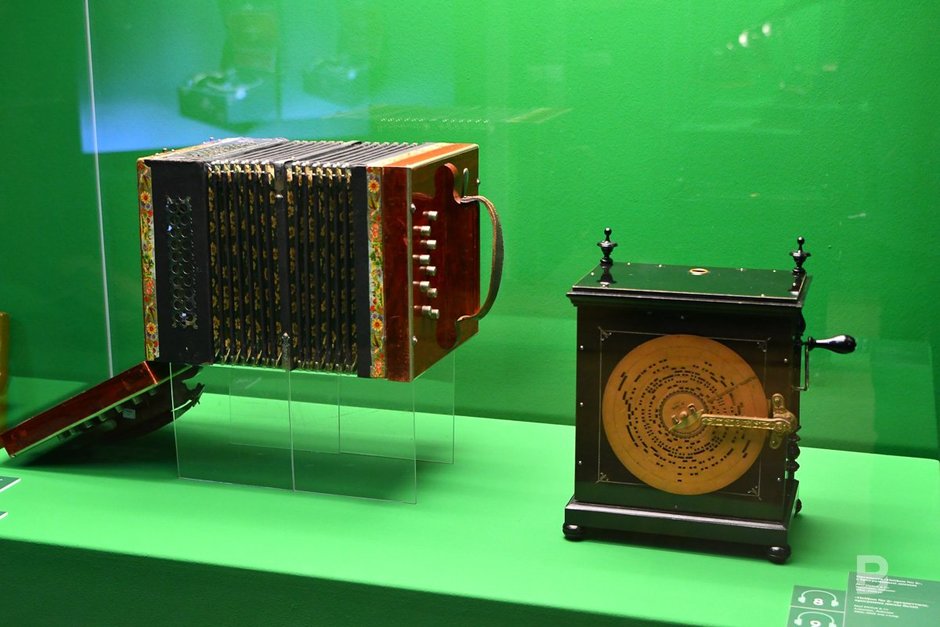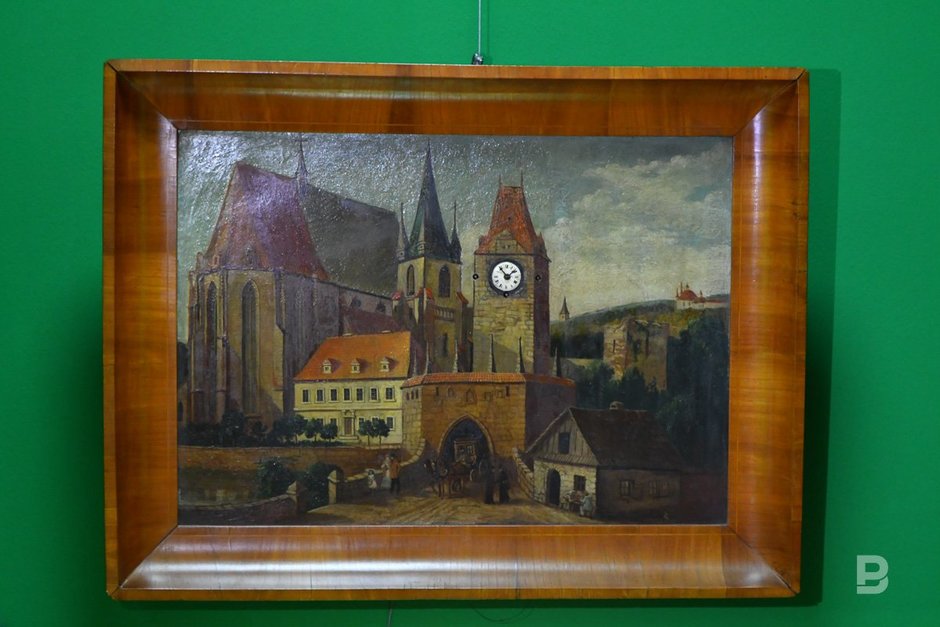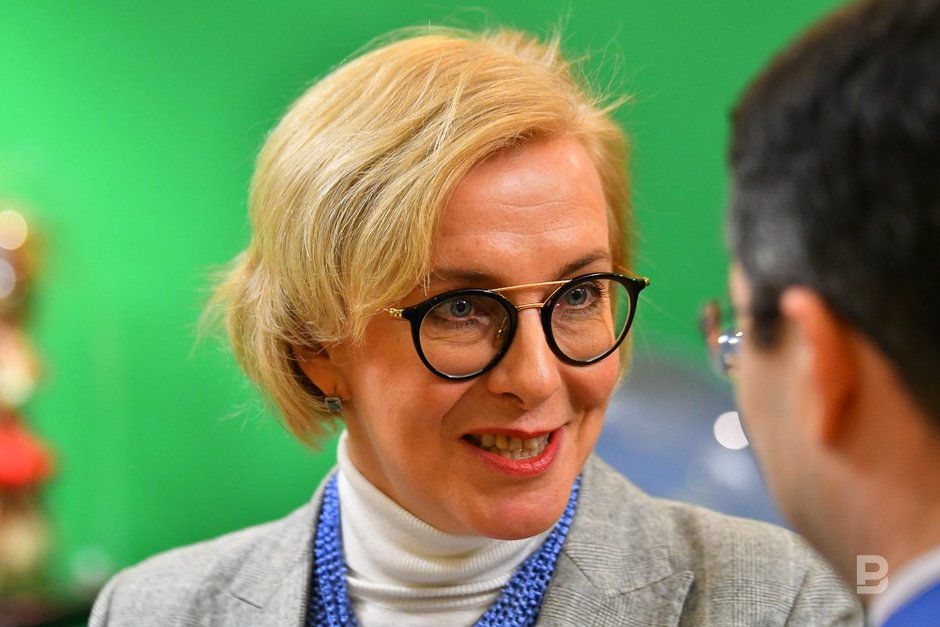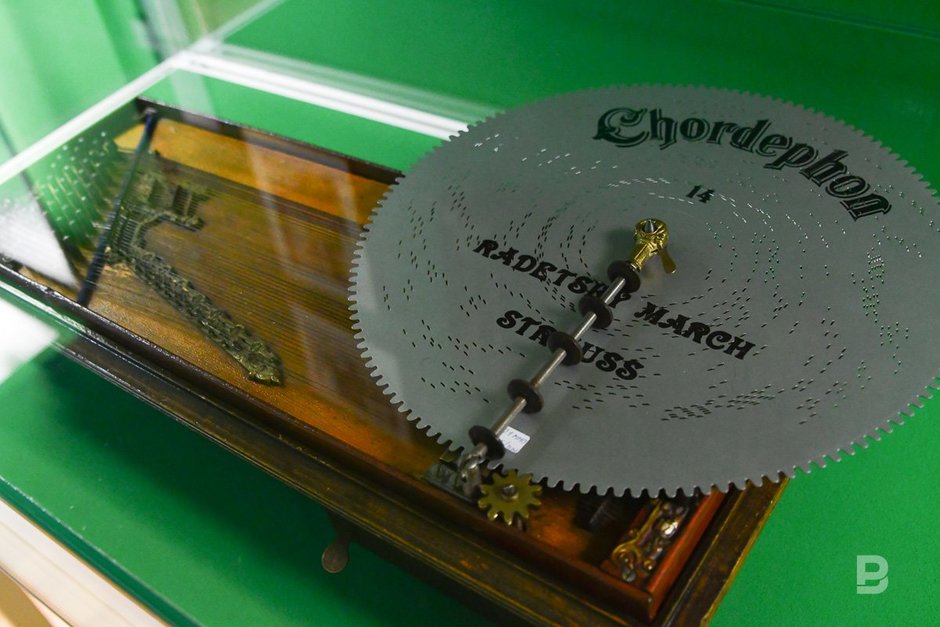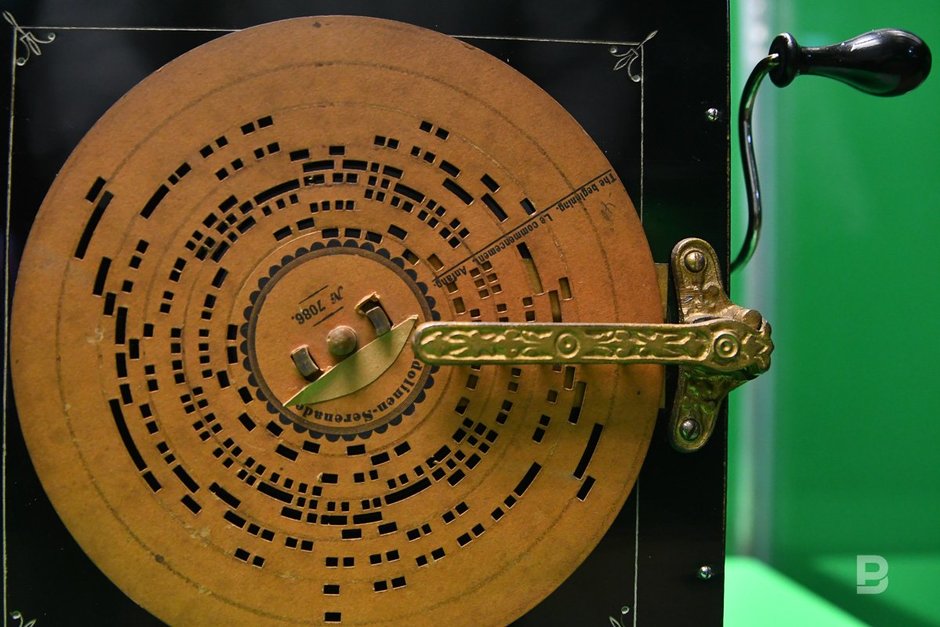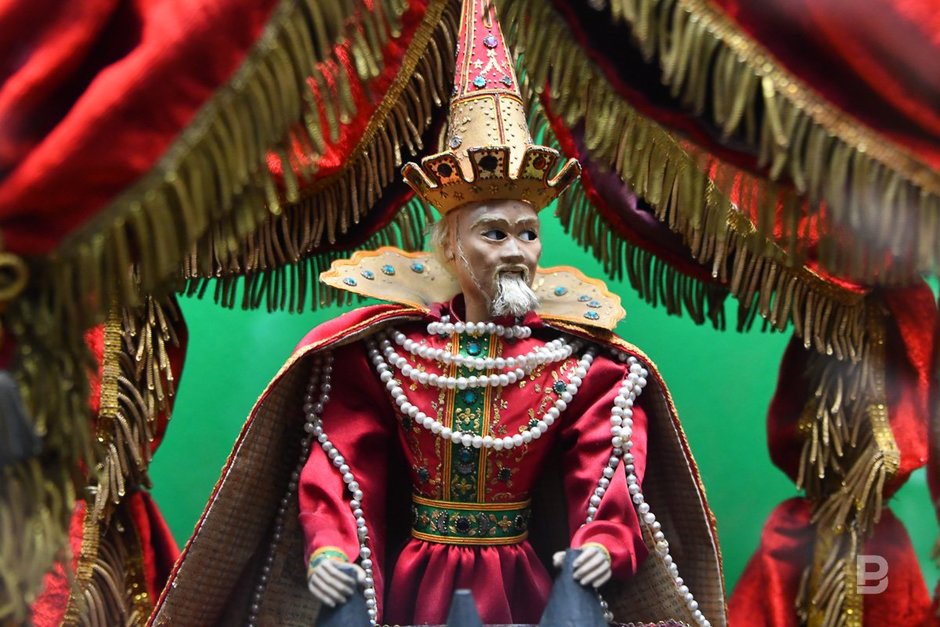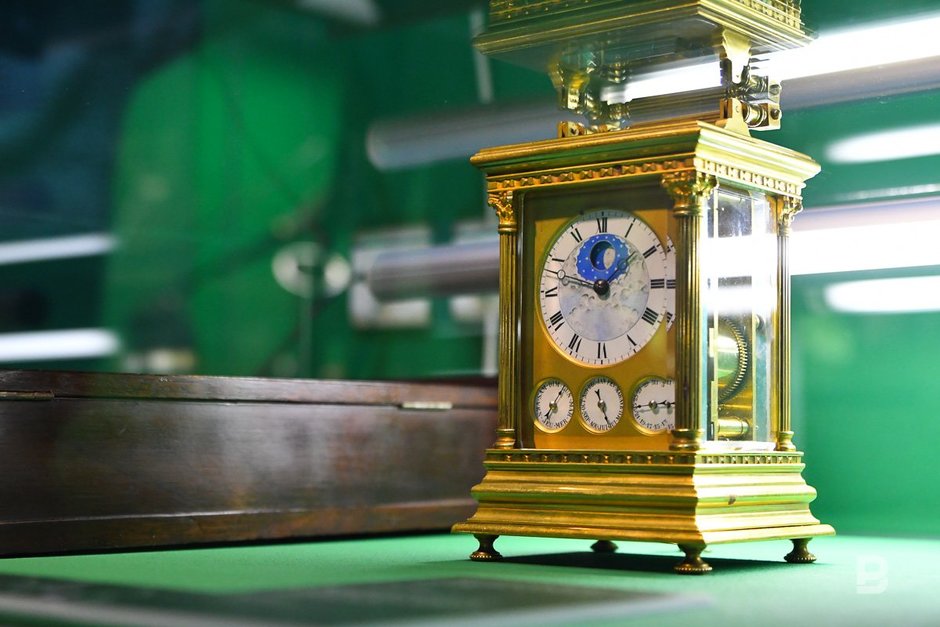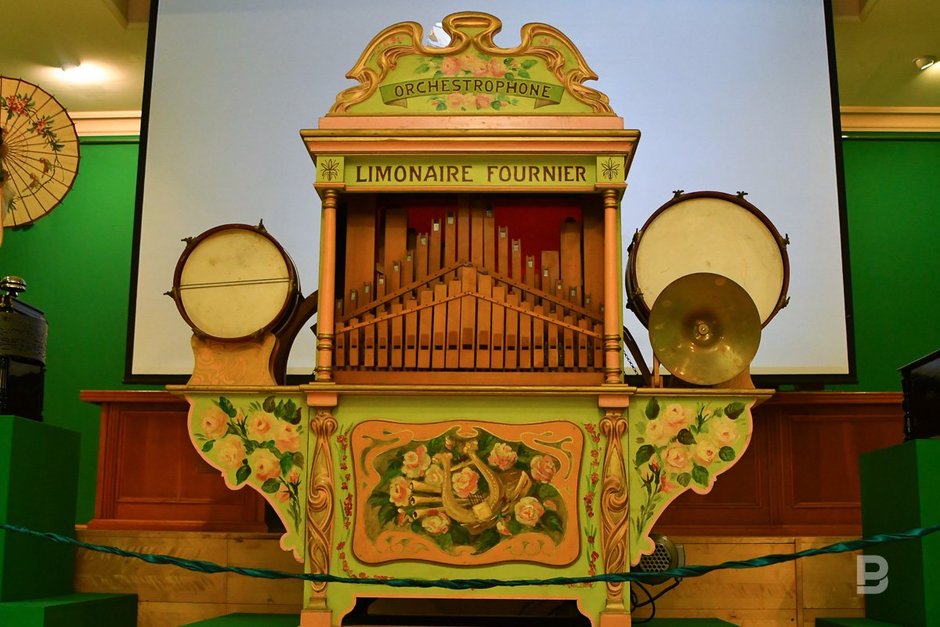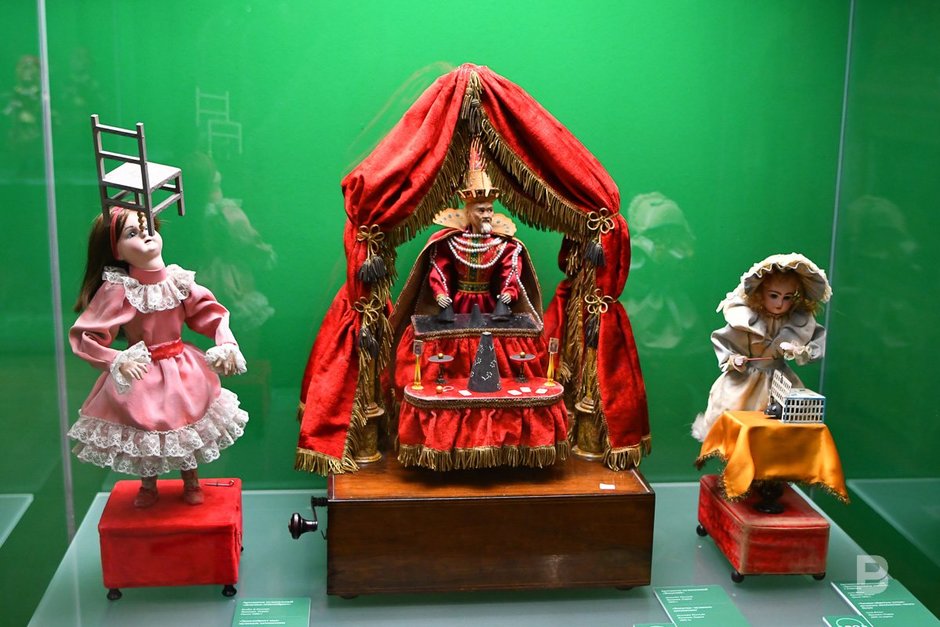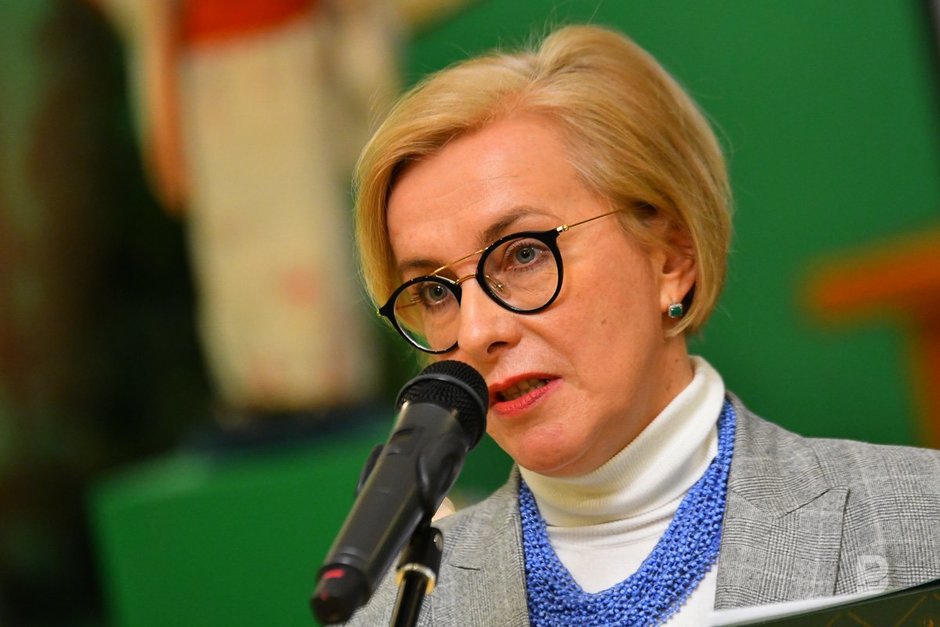'Musical Magic': bicentennial robots and clocks from the past
Hermitage-Kazan Centre has presented antique rarities of the past centuries for the first time in Russia
On December 17, the Hermitage-Kazan Centre opened the New Year's exhibition “Musical Magic. Mechanical toys and antique rarities of the 18-20 centuries” from the funds of the private Collection museum, one of the largest in Europe. With this project, the private Moscow museum of patrons David and Mikhail Yakobashvili have come to Tatarstan for the first time. How they entertained themsleves in stagecoaches almost 300 years ago, what the modern music box grew out of, and whether street pipe organs sound today — read in the report of Realnoe Vremya.
What are we going to play?
Two halls of the Hermitage-Kazan Centre is filled with 48 unique exhibits. Automatons — devices of the past centuries with unique complex mechanisms can be considered, for example, the ancestors of modern robots. A variety of mechanical toys are on display here — very small and half the height of a human. “The Singing Clock”. Amazing jewelry boxes and photo albums... They all sing, ring and “tink” — to a gentle melody, an elegant toy Japanese woman drinks tea, a girl doll releases a mouse from a mousetrap, a mechanical equilibrist turns a chair on her nose. There is a dapper dandy among these toys, and a lady with a compact, and a whole street theatre in miniature, and even a rock with a waterfall.
However, most of these original luxury items are hidden in glass cases — they are incredibly expensive. However, as the staff of the Collection museum assure, all the toys are in working condition. The museum has its own restoration workshop, through which the exhibits have passed.
“All these rarities are acquired by museum owners at auctions — sometimes Russian, but more often European and American. Very often they come to us in good condition, but still require prevention. It happens, of course, that automatons (mechanical dolls) and music boxes do not work. In this case, another similar mechanism is bought at auction, in a hopelessly inoperable condition. Its details prolong the life of our exhibits. But I can say that all of our treasures have exclusively original details, created precisely in the past centuries — some were made conscientiously. The service life depends on the frequency of use and on how carefully the last owner did it," says the head of the restoration centre of the Collection museum, Aleksey Kucheryavy.
Who invented the sound recording
As you know, the first automatons — the ancestors of modern robots — appeared in ancient times. From the legends, we can learn that there were then walking statues of Daedalus in Athens, and the flying wooden dove of Archytas of Tarentum. They, of course, have not reached our time, but products with an almost 300-year history have been preserved. Russian tsars also dabbled with automatons. Perhaps, the most famous is the Peacock clock of Catherine the Great, which is now kept in the Hermitage. They were made in England and cost 11,000 rubles (about 1,800 pounds sterling). The Peacock is still active, it is started to the delight of the public every Wednesday at eight o'clock in the evening. Next to the throne of Tsar Aleksey Mikhailovich, judging by the chroniclers' stories, there was a pair of mechanical lions who could move their paws and tail, and rotate their heads.
The oldest exhibit of those that have arrived in Kazan now is the stagecoach clock, they date back to 1760, and this is the only one in Russia. According to the rating of antiquity, they are followed by the carriage clock that looks like a fireplace clock. One could listen to their ringing all the long way! There is a calendar in such clock, and even a mechanism for determining the phase of the Moon. But the pendulum clock that works through electromagnetic vibrations...
“Clockmakers — that's who first thought about sound recording! It was in the middle of the 18th century that the masters managed to implement several technical know-how. We know that from a certain moment the watch began to be exhibited permanently — as a luxury item, an indicator of security and prestige. However, the eighteenth century is a time of great upheavals, wars, discoveries and conquests, and any movement of the clock leads to a failure of accuracy. So, in order to debug the time, the Tourbillon platform appears, and a Repeater button is also created, with which one can find out what time it is at any time of the day," said Svetlana Churaeva, the art director of the Collection Museum.
Also, automatons are not only the first robots, but also the progenitors of computers and modern electronic devices, because they worked on ... punch cards! This programming language was written in the form of holes, numbers and circles.
Returning home
The Collection Museum has come to Kazan for the first time, on the initiative of the Hermitage-Kazan Centre. Now the colleagues intend to be close friends, and at the Musical Magic, they plan excursions, during which visitors will get some valuable toys and conduct an educational programme with master classes.
Yakobashvili's father and son had the idea of opening their museum in 2004. Now a four-storey building has been allocated for it, in which educational programmes are regularly conducted. It is important that visiting the museum is fundamentally free. More than 20 thousand exhibits are now stored in its funds.
In addition to automatons, these are several other areas of activity — decorative, applied and clockmaking, fine art, printed products and musical media. Now, for example, an exhibition of jewelry art has opened there — these are values that during the last century for various reasons “sailed away” from Russia, thanks to the efforts of caring patrons, they return to the country.
All-Russian premiere of rarities
The entire collection is insured for a considerable amount. The amount and cost of insurance, however, is not called.
“This is our first field project. We brought the exhibits directly from the restoration centre, even Moccow citizens did not see them, so the exhibition 'Musical Magic' is the All-Russian premiere. I think the cooperation will continue. We made this exhibition quite quickly: in August, the idea just appeared, and in December, the exposition is already available to Kazan residents. It would seem that it is small — only two halls, but there is very capacious content here, in fact, telling about the evolution of various sound carriers and the development of sound recording. Each visitor of the exhibition will receive an audio guide that will introduce the museum's collection and reproduce sounds and videos of the work of mechanical dolls and antique rarities. Multimedia accompaniment of the exhibition will give visitors the opportunity to get acquainted with rare and unique recordings digitised from musical media from the collections of the Collection Museum. We hope that our exhibition will become a New Year's gift to the residents of Tatarstan and will encourage them to dive deeper into the world of fascinating sounds of mechanical toys and automatons," Svetlana Churaeva hopes.
The exhibition also presents a modern version of the music box of the Swiss company Reuge. Today, it is the world's most famous (and one of the last) manufacturer of premium music boxes and mechanical birds. Today, such “playing clocks” will not be cheap. On the websites of auction houses, you can price the models for about 23 million rubles. The exhibit, which looks more like a jukebox, is eagerly started by the museum staff for visitors. Not only bells make sounds on it, but also special bells and drums, which can be seen in a glass case — a modern-style design with transparent acrylic sides allows you to see all the mechanics. In total, there are four rollers in the “jukebox”, each of which has eight melodies recorded. It can be looped and listened to in a row, or you can choose your favourite.
The exhibition is open until February 27, 2022.
